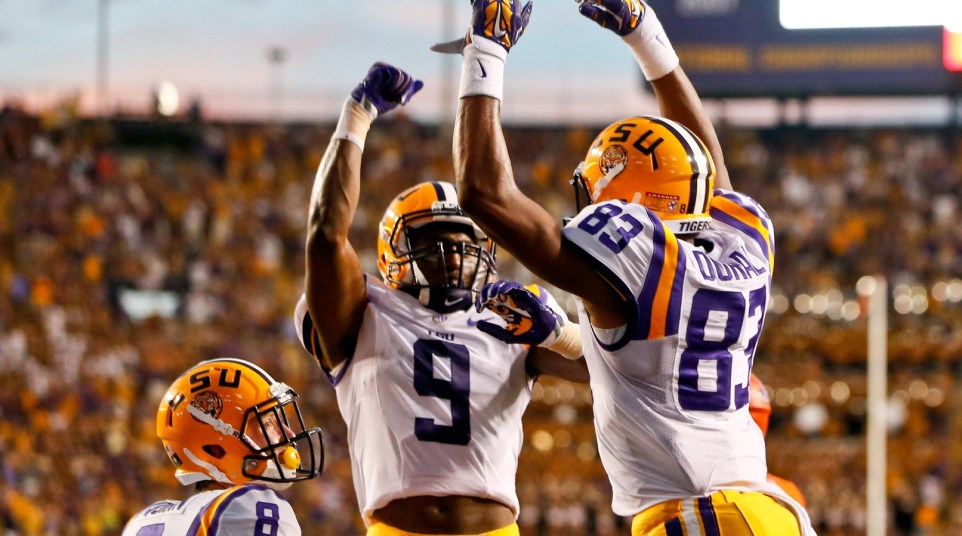LSU receivers must make progress along with quarterbacks
LSU finished last in the SEC in passing last season. It’s a jarring fact that looks worse when you examine the numbers.
While it’s easy to blame the quarterback situation for the Tigers’ woes, there’s plenty to go around. The coaching staff gets some, and the young group of wide receivers takes some more.
The group certainly is talented, loaded with four- and five-star recruits. It was especially young in 2014, with three regular contributors — Malachi Dupre, Trey Quinn and John Diarse — all playing their first college seasons, and top receiver Travin Dural starting for the first time in his career.
That bunch is a year older and more experienced with spring practice underway, and it’s deeper too. Incoming freshmen Tyron Johnson, Brandon Martin and Derrick Dillon will all have a chance to make an impact once they get to campus this fall.
New receivers coach Tony Ball will be tasked with bringing their level of play up, and he’s already hard at work just more than a week into spring practice.
So, how are they doing?
After a handful of practices, there have been a few dispatches. Most interestingly, Dural told the New Orleans Advocate that he’s added 10 pounds this offseason. The skinny home-run threat was listed at 192 pounds last year, but told the Advocate he’s up to 198 pounds.
Last year, Dural was a bit of a one-trick receiver, running routes down the sideline and not much else until late in the season, when LSU found ways to get him involved in the running game. With the extra weight, Dural should be more equipped to run high-percentage routes and make life easier on his quarterback.
In Saturday’s scrimmage, Les Miles informed reporters that LSU’s quarterbacks tossed three touchdown passes; two from Brandon Harris (along with an interception), another from Anthony Jennings. He also let out who was on the receiving end of those passes: Dural, Quinn and D.J. Chark.
That Dural caught a touchdown should come as no surprise; he brought in seven of LSU’s 17 passing touchdowns last year.
Quinn getting into the end zone is a welcome sign, though. Quinn served as a slot receiver, where his good size (6-feet, 194 pounds) can help make him a mismatch. As a freshman, Quinn didn’t get into the end zone, and he had trouble with drops in some crucial moments. If he can improve his pass-catching abilities — something Ball has a reputation for as a coach — Quinn has breakout potential.
While the development at quarterback is one of the most vital position battles in spring practice, Harris and Jennings will need help from their receivers. It is something to keep an eye on all spring and fall as the Tigers get geared up for 2015.

